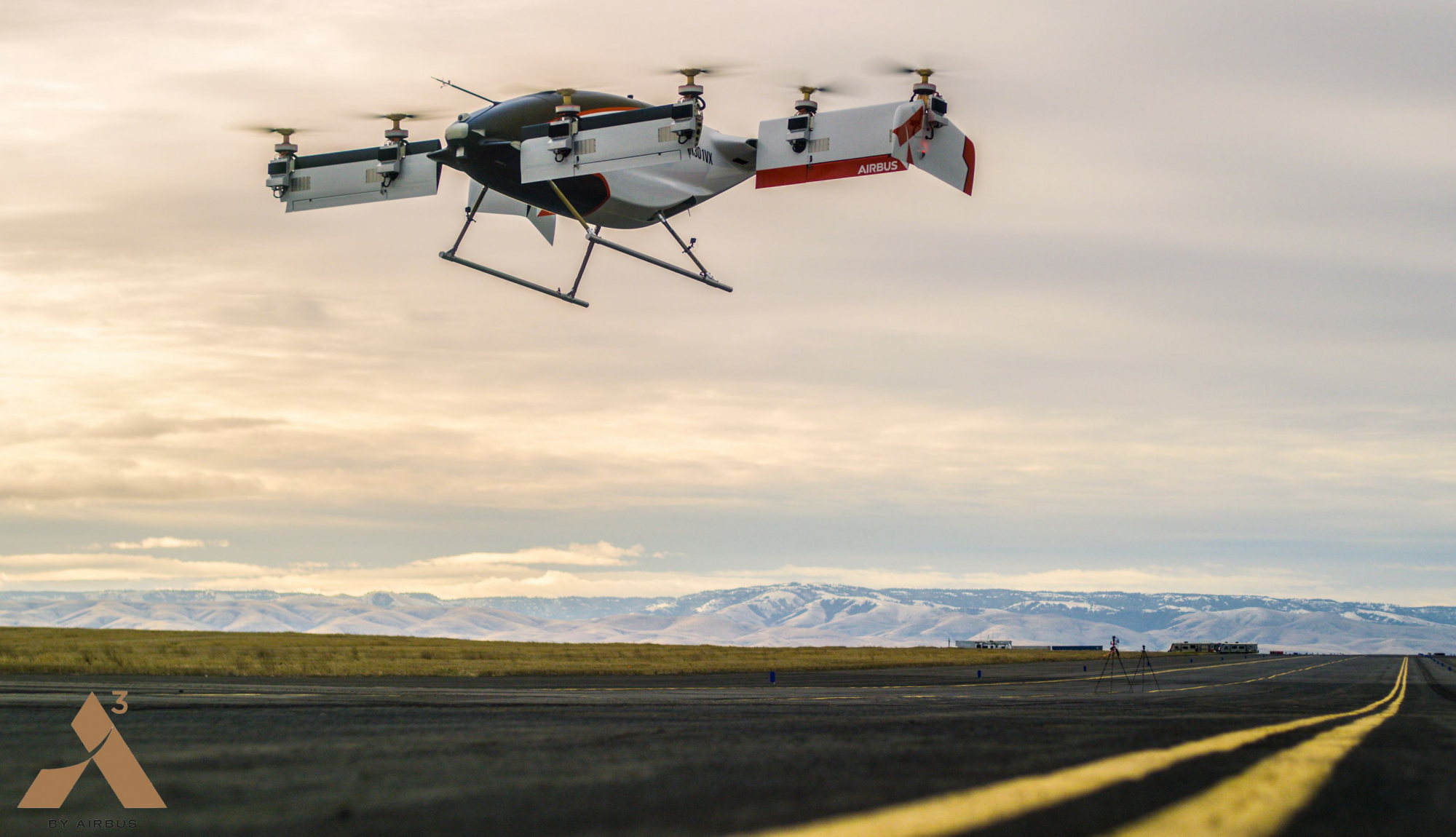|
Vahana, the all electric, self-piloted, VTOL
aircraft from A� by Airbus, has successfully completed its first
full-scale flight test, reaching a height of 5 meters (16 feet)
before descending safely. The test was completed at the Pendleton
UAS Range in Pendleton, Oregon.
Vahana�s first flight, which lasted 53
seconds, was fully self-piloted and the vehicle completed a second
flight the following day.

�We are celebrating a great accomplishment
in aerospace innovation,� said Zach Lovering, Project Executive of
Vahana. �In just under two years, Vahana took a concept sketch on
a napkin and built a full-scale, self-piloted aircraft that has
successfully completed its first flight. Our team is grateful for
the support we�ve received from A� and the extended Airbus family,
as well as our partners including MTSI and the Pendleton UAS
Range.�
Vahana is a project developed at A�, the Silicon Valley
outpost of Airbus. A� enables access to unique talent and ideas,
new partnership opportunities, and execution at speed. Vahana aims
to democratize personal flight and answer the growing need for
urban mobility by leveraging the latest technologies in electric
propulsion, energy storage, and machine vision.
�Vahana�s first
flight demonstrates Airbus� unique ability to pursue ambitious
ideas quickly, without compromising the quality and safety for
which the company is well-known. For A�, it proves that we can
deliver meaningful innovation with aggressive project timetables,
to provide a real competitive advantage for Airbus,� said Rodin Lyasoff, A� CEO and former Project Executive of Vahana. �Our focus
now is on celebrating the work of the tireless Vahana team while
maintaining the momentum of this accomplishment.�
Vahana
leverages its self-piloted capabilities to operate without a
passenger. Following these successful hover flights, the team will
turn to additional testing, including transitions and forward
flight.
|
Headlines: |
|
See latest
HD Video
Interviews,
Podcasts
and other
news regarding:
Vahana,
VTOL,
Airbus.
|

